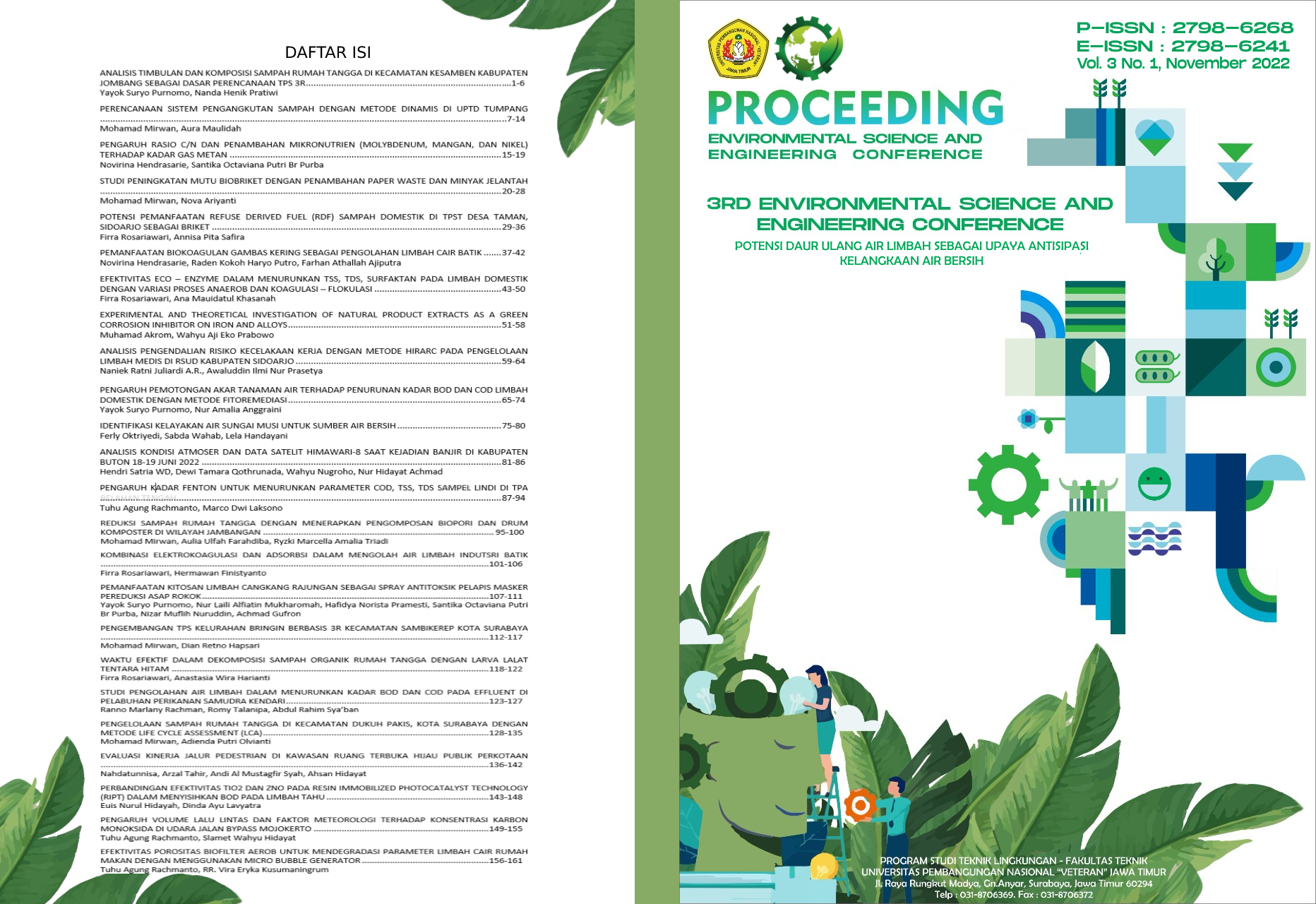Pengaruh Kadar Fenton untuk Menurunkan Parameter COD, TSS, TDS Sampel Lindi di TPA
Keywords:
fotofenton, leachate, coagulation, flocculation, Fe2SO4 : H2O2, pH, TPA Belahan TengahAbstract
Leachate waste is water seepage from buried garbage. Leachate water contains organic compounds in the form of hydrocarbons, sulfuric acid, tannic acid, humic acid, gallic acid and contains inorganic compounds in the form of sodium, potassium, magnesium, chlorine, and other heavy metal compounds that have high concentrations, so that they have the characteristics of COD (608.6 mg). /liter), TSS (5280 mg/liter), and TDS (1925 ppm) are high and dangerous for aquatic ecosystems if discharged directly into water bodies. This study aims to determine the efficiency of leachate treatment using a coagulation flocculation reactor and a photofenton reactor. This study used the Jartest method with different concentrations of Fenton's reagent. In the coagulation flocculation pretreatment using AlSO4 coagulant as much as 16 grams/liter which is able to remove COD by 52%, TSS by 70%, TDS by 50%. Furthermore, the water resulting from the coagulation of flocculation is treated by the photofenton method. In the batch system the efficiency of reducing COD, TSS, TDS obtained at the ratio of FeSO4: H2O2 (1:10) within 30 minutes was 30%, 93%, 2%. Then the best results were obtained from the batch system, followed by a continuous system which obtained the final results of the removal of COD, TSS, TDS reductions which were obtained respectively 80%, 45%, 48%. The final results of processing the COD, TSS, TDS parameters using the photofenton method were 29.09 mg/liter, 440 mg/liter, and 336 ppm respectively.
Downloads
Published
Issue
Section
License
Copyright (c) 2022 Tuhu Agung Rachmanto, Marco Dwi Laksono

This work is licensed under a Creative Commons Attribution 4.0 International License.













 ISSN 2798-6241
ISSN 2798-6241 





